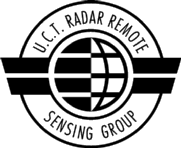

Back to list of Group's MSc Theses
Abstract:
Current radar systems utilize advanced processing techniques to optimize detection, accuracy and resolution performance. Although the detection range of these systems is still calculated with the basic range equation, prediction of the accuracy and resolution performance of such systems generally require detailed simulations. This thesis examines the postional accuracy of a pulsed surveillance radar utilizing various postion estimators.
The following dissertation considers the single-scan two-dimensional positional accuracy of a pulsed surveillance radar. The theoretical aspects to the positional accuracy are considered and a generalized analytical approach is presented.
Practical position estimators are often complex, and theoretical predictions of their performance generally yield unfriendly mathematical equations. In order to evaluate the performance of these estimators, a simulation method is described based on replicating the received video signal. The accuracy of such a simulation is determined largely by the accuracy of the models applied, and these are considered in detail. Different azimuth estimation techniques are described, and their performances are evaluated with the aid of the signal simulation.
THe best azimuth accuracy performance is obtained with the class of analogue processing estimators, but they are fund to be more susceptible to interference than their binary processing counterparts. The class of binary processing estimators offer easily implemented techniques which are relatively insensitive to radar cross-section scintillation characteristics. A hybrid estimator, using both analogue and binary processing, is also evaluated and found to give an improved accuracy performance over the binary processing method while still maintaining the relative insensitivity to radar cross-section fluctuation.
Back to list of Group's MSc Theses
Abstract:
This thesis describes the software design of a general purpose digital processor for the decoding of spaceborne SAR data. The first section develops a unified theoretical basis to explain the mechanism of operation of SAR. The second section is concerned with the design of a spaceborne SAR processor. Range correlation, range walk correction, azimuth correlation and the effects of range migration are considered.
Synthetic Aperture Radar (SAR) has many possible applications for the Southern African Region and therefore, because no expertise was available in SA for decoding of SAR data, it was decided that a facility for SAR research should be created. This research facility was realised at the University of Cape Town.
This thesis is the first phase of a project launched by the research facility, which comprises of the software design of a general purpose digital processor for the decoding of spaceborne SAR data. The thesis is divided into two main sections. The first is concerned with the development of a unified theoretical basis to explain the mechanism of operation of SAR. The second section is concerned with the design of a spaceborne SAR processor.
In Chapter 2, it is proved that SAR can be treated in its entirety from a signal processing perspective. Most of the specialised teory and techniques used to discus SAR processing are relatively standard processing techniques as used in the signal processing literature. Azimuth SAR processing is shown to be no more complicated than the digital correlation of a sampled signal, where this signal is simply the Doppler waveform associated with a moving target.
In Chapter 3, an algorithm design is proposed for a digital processor to decode spaceborne SAR data. This design is general enough to accommodate data from a variety of spaceborne SAR systems, each with its own orbital geometry and system parameters. Simulated data is used to test the validity and sensitivity of these algorithms.
To illustrate the operation of decode algorithms in terms of numerical values, real system and orbital values are used throughout Chapter 3. These values were obtained from the "Shuttle Imaging Radar B Experiment" (SIR-B).
The proposed software design was implemented at UCT and tested on raw radar data of Cradock in South Africa. This data was obtained from the SIR-B experiment. A fully processed SAR image of the region, obtained using the algorithm design outlined in this thesis, is included in Chapter 3.
Back to list of Group's MSc Theses
Abstract:
The Abstract is unfortunately not available, as the thesis cannot be located.
Back to list of Group's MSc Theses
Abstract:
This thesis is concerned with the design and implementation of a spaceborne Synthetic Aperture Radar (SAR) data processor. The implementation of the processing is based on a standard sequential approach to the problem and employs commonly used algorithms.
The raw data processed was that obtained from the Shuttle Imaging Radar B (SIR-B) and was supplied by the Jet Propulsion Laboratories (JPL) in California. The basic functions performed by the software include range and azimuth processing, which involve the match filtering of reference functions with the raw data. Compensation for the effects of being a spaceborne SAR were also implemented, which involved compensation for the effect of planet rotation and radar height.
Images processed by JPL of the same area were also available, which allowed for direct comparisons between the outputs of the two SAR processors. The images produced were pased through a number of filters, to improve the image quality, and resulted in favourable comparisons to the JPL generated images. The actual images are included in the later sections of the thesis.
Back to list of Group's MSc Theses
This page was last updated in January 2007 (RL)
![]()